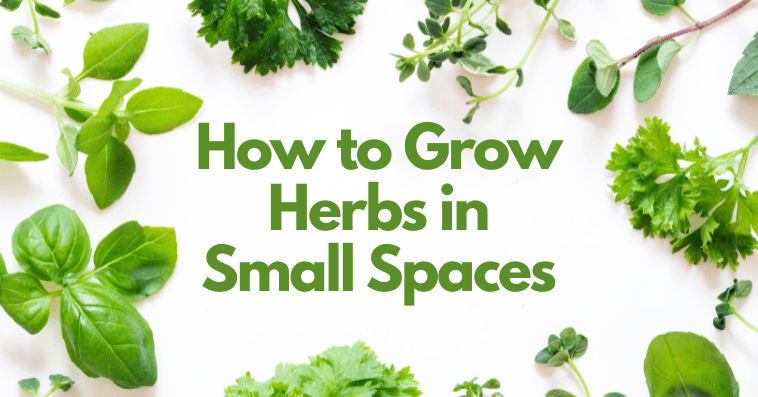Don’t let limited space keep you from growing your own fresh herbs! Whether you live in a compact apartment, a dorm, or a home with no backyard, growing herbs in small spaces is entirely possible—and incredibly rewarding.
From adding zest to your meals to enhancing your indoor air quality, homegrown herbs are the perfect introduction to gardening. In this guide, we’ll show you how to grow a variety of herbs in tight spots like balconies, windowsills, kitchen shelves, or vertical gardens.
Let’s dig in and create your very own mini herb garden—no matter how small your space is!
🌱 Why Grow Herbs at Home?
Fresh herbs offer more than just flavor. Here’s why every home should have a mini herb garden:
- ✅ Fresh, chemical-free ingredients at your fingertips
- ✅ Saves money in the long run
- ✅ Adds greenery and charm to any space
- ✅ Aromatic and therapeutic properties
- ✅ Beginner-friendly and low-maintenance
- ✅ Supports sustainable living
From mint and coriander to basil and thyme, herbs are versatile, resilient, and perfect for even first-time gardeners.
🪴 Best Herbs to Grow in Small Spaces
Not all herbs require expansive gardens. Here are top herbs ideal for small containers:
- Basil – Thrives in sunlight; perfect for pasta and pesto
- Mint – Grows quickly; great for tea and chutneys
- Coriander (Cilantro) – Fast-growing and widely used in Indian dishes
- Parsley – Hardy and flavorful
- Thyme – Drought-tolerant and aromatic
- Oregano – Ideal for Mediterranean dishes
- Chives – Add flavor to salads and soups
- Lemongrass – Grows well in pots and adds a citrusy aroma
These herbs grow well in pots, planters, or hanging containers and can easily thrive on a balcony, window ledge, or kitchen counter.
🏡 Step-by-Step: How to Grow Herbs in Small Spaces
Step 1: Choose the Right Containers
For small-space gardening, container selection is crucial. Choose pots that are:
- 6-12 inches deep
- Have drainage holes at the bottom
- Made from terracotta, plastic, or ceramic
- Lightweight and easy to move
For extra creativity, reuse mason jars, tin cans, or hanging baskets.
🌿 Tip: Grow one herb per container to avoid overcrowding.
Step 2: Use Nutrient-Rich Potting Mix
Use a lightweight, well-draining potting mix enriched with organic compost or cocopeat. Avoid regular garden soil—it’s too heavy and might suffocate roots.
You can also mix in vermicompost or organic manure for better growth.
Step 3: Pick the Perfect Spot
Most herbs need 4–6 hours of sunlight daily. Here’s where you can grow them:
- Balcony railing planters
- Kitchen window sills
- Vertical garden walls
- Hanging baskets in the sunniest corner
- Countertop herb shelves
If your space lacks sunlight, consider using LED grow lights.
Step 4: Watering Your Herbs
Watering depends on the herb, climate, and soil, but here are general rules:
- Water once the top 1 inch of soil feels dry
- Avoid overwatering—herbs hate soggy roots
- Water early in the morning or late in the evening
- Use a watering can with a narrow spout for precision
Step 5: Feed Them Right
Herbs are light feeders. Fertilize once every 2–3 weeks with:
- Liquid organic fertilizer
- Compost tea
- Seaweed extract
Avoid synthetic fertilizers, especially if you plan to use your herbs for cooking.
Step 6: Pruning and Harvesting
- Start harvesting once the plant is 4–6 inches tall
- Trim from the top to encourage bushy growth
- Remove yellowing or dead leaves regularly
- Don’t harvest more than one-third of the plant at once
Regular harvesting not only gives you fresh herbs but also helps the plant grow stronger and fuller.
💡 Creative Herb Garden Ideas for Small Spaces
Here are some fun and functional ways to grow herbs even in the tightest corners:
- Vertical Herb Garden: Use wall-mounted racks or hanging shoe organizers
- Tiered Herb Stand: Place stacked planters in tiers for more herbs in less space
- Window Herb Shelf: Install a floating shelf with pots near your kitchen window
- Rail Planters: Attach planters to your balcony railing
- Mason Jar Garden: Recycle jars and label each herb for easy access
These ideas are not only space-saving but also turn your home into a green retreat.
🌿 Common Mistakes to Avoid
- Overcrowding multiple herbs in one small pot
- Overwatering or letting water stagnate
- Using poor quality soil or containers with no drainage
- Placing herbs in dark or poorly ventilated areas
- Not pruning or harvesting regularly
Remember: herbs are easy, but they still need love, light, and care!
✅ Bonus: How to Grow Herbs Indoors Without Soil (Hydroponic Option)
If you're short on mess-free space, consider growing herbs hydroponically using:
- Mason jars or hydroponic kits
- Water with liquid nutrients
- Grow lights for artificial sun
Hydroponic herb gardens are clean, efficient, and modern—perfect for indoor gardening lovers!
🌱 Grow Fresh, Live Fresh – Anytime, Anywhere!
Whether you have a tiny apartment balcony or just a sunny kitchen window, you can enjoy the joy of fresh herbs at home. Small-space herb gardening is easy, low-cost, and extremely satisfying.
From enhancing your meals to making your home greener and cleaner, there are countless benefits to growing your own herbs. And the best part? You don’t need a sprawling garden to make it happen.
🛒 Where to Buy Herb Plants and Kits Online
Want to start your herb garden today?
Visit PaudheWale – your one-stop destination for herb plants, organic soil, planters, gardening tools, and even DIY herb garden kits. Whether you're a beginner or a pro, PaudheWale has everything you need to grow fresh herbs in any space.
Why wait?
🌿 Buy fresh herbs and gardening kits from PaudheWale and bring home nature—one pot at a time.

